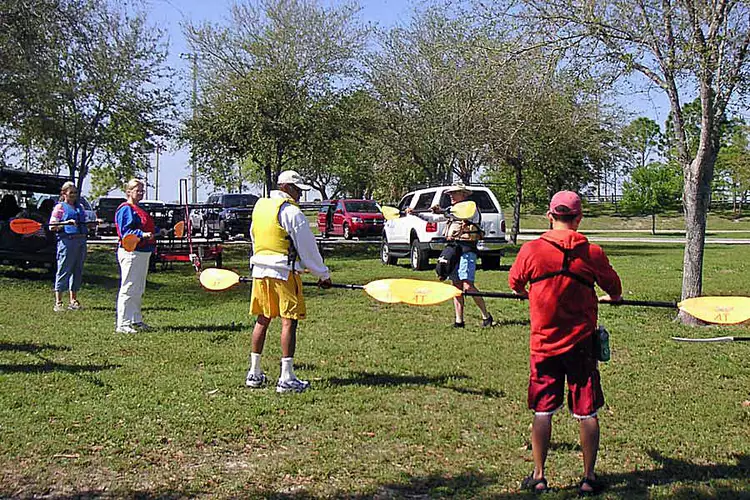Summary
Learning how to hold a kayak paddle is one of the first and most important steps to mastering the art of kayaking. Kayaking offers a fantastic way to immerse yourself in nature and enjoy the great outdoors, all while embarking on a truly exhilarating experience. A common error for beginners is to hold the paddle incorrectly, such as upside down or backward. This guide will provide clear steps to help you understand how to properly grasp and hold a kayak paddle.
01. Know the Anatomy of a Kayak Paddle
The main distinction between canoeing and kayaking lies in the paddle itself, making it crucial to understand its anatomy. A kayak paddle features a long shaft with a blade attached at each end, unlike a canoe paddle. When at rest, the paddle rests across the kayak; as you paddle, you’ll balance and adjust your grip along the shaft to dip each blade into the water, pulling it through the current in sequence. A comprehensive understanding of these components and their ergonomic design is vital both for performance and comfort.
02. Make Sure the Paddle Blades Face the Right Direction
The faces of kayak paddle blades come in various shapes and designs; some are flat, others curved, some ribbed, and some completely smooth. The concave side of a curved blade and the smooth side of a ribbed blade are known as the power face. Although it might not seem critical at first, using the correct side of the blade can significantly impact the power generated during your stroke. Always keep the power faces of the paddle blades facing you.
A useful visualization is to think of your hand as a paddle. Keep your fingers and thumb together, slightly curving your fingers inward. The palm of your hand represents the face of the paddle, while the back of your hand symbolizes the back of the paddle. The paddle’s curved face works with the water’s current, which is the part you want to pull through the water.
03. Make Sure the Paddle Is Right Side Up
Paddle blades also come in various configurations: some are symmetrical, while others are asymmetrical. The symmetry affects how water flows across the blade—symmetrical blades excel with vertical strokes, while asymmetrical blades are better for lower-angled strokes. When using a symmetrical paddle, either side can be on the top. However, if your paddle is asymmetrical, it is essential to hold it as designed.
Typically, the top edge of an asymmetrical kayak paddle blade is slightly longer than the bottom edge. Many manufacturers place their logos on the blade, so remembering to keep the logo facing up will ensure that you are holding your paddle correctly.
04. Feathering: Determine Your Control Grip
Feathered kayak paddles have one blade connected to the shaft at a different angle than the other, resembling an airplane propeller. To check for feathering, lay your paddle flat on the ground; if one blade lies flat while the other is slightly angled upward, you have a feathered paddle. These paddles can differ by angles between 15 and 60 degrees. Feathering offers two advantages: it simplifies paddling into the wind and is easier on your wrist, as it reduces the required turning angle while paddling.
Most paddles are designed for right-handed use, meaning the right paddle is angled for the upstroke. If the right paddle is the upstroke one, your control grip will be with your right hand. As you take a kayaking stroke, allow the paddle to rotate and adjust in your left hand, ensuring each paddle entry into the water is smooth.
05. Grasp and Hold the Paddle
Begin by grabbing the paddle. Position your control grip on the shaft first, followed by your other hand on the paddle. Ensure your hands are centered on the shaft and slightly wider than shoulder-width apart. When you place the paddle on your head while holding it, your elbows should create an angle slightly less than 45 degrees. Note that your grip should not be overly tight; if you can see the whites of your knuckles, you are gripping too hard.





